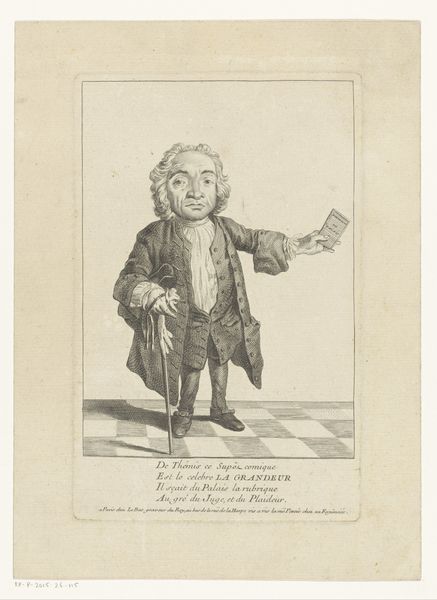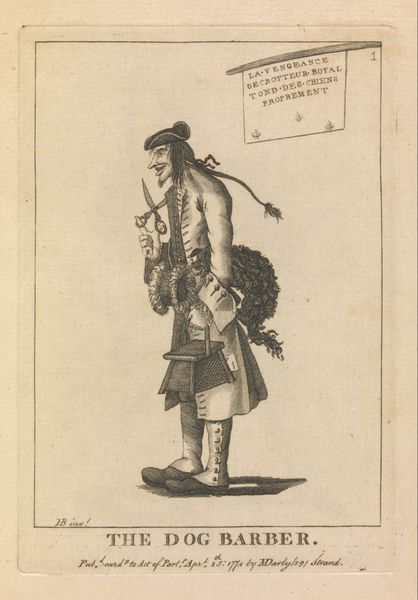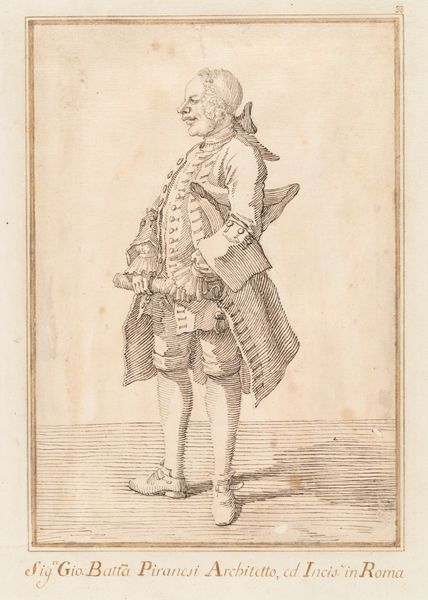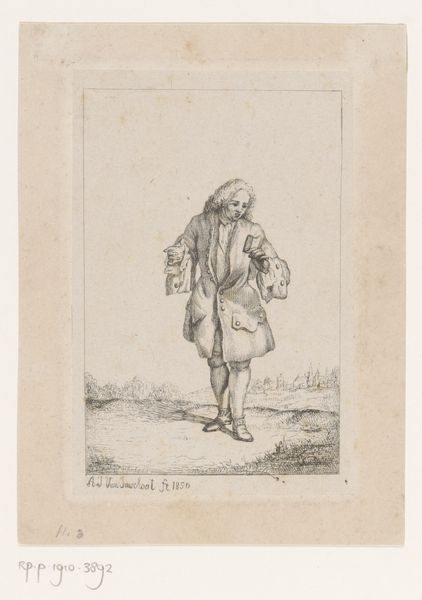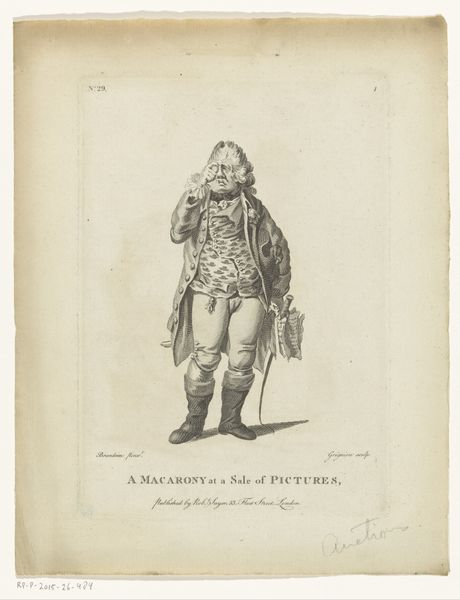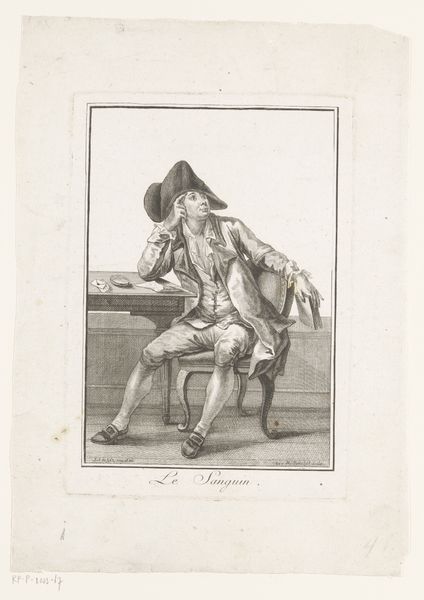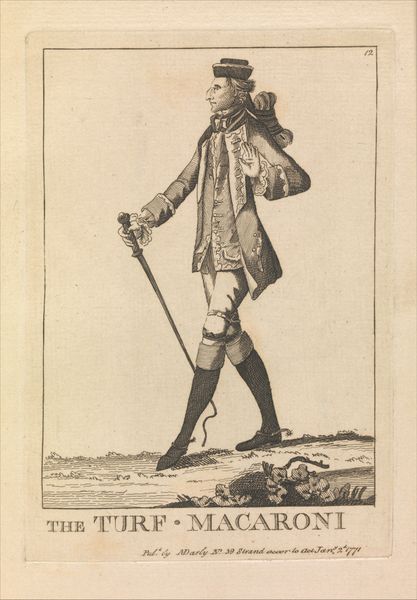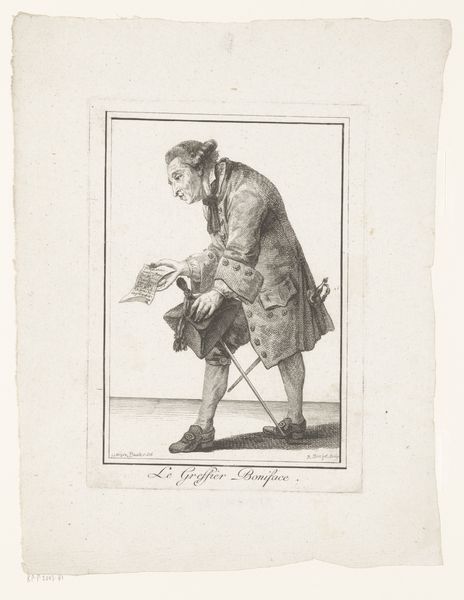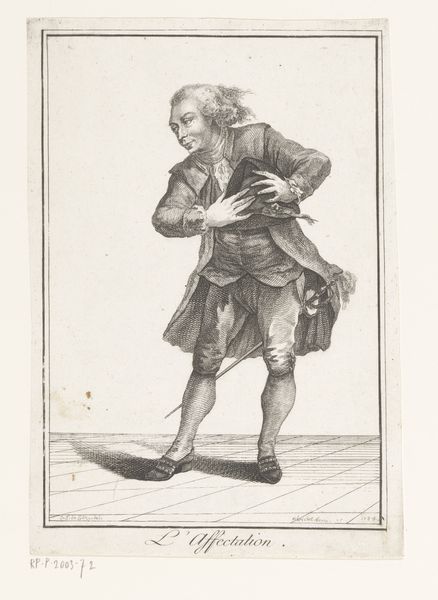
Dimensions: height 176 mm, width 129 mm
Copyright: Rijks Museum: Open Domain
This print, "Macaroni Auctioneer," was made in 1773, and its maker is unknown. It depicts a figure who is both elegant and absurd. The term "macaroni" was used in 1770s England to describe men who adopted exaggerated foreign fashions. They were critiqued for affectation and excessive luxury. This print links the macaroni to the institution of the auction house. What might this connection imply? Auctions were on the rise in 18th-century England as a way of selling property and goods. They became a public spectacle. Was this print attempting to critique the transformation of British society, where status and taste were becoming commodities to be bought and sold? To better understand this print, historians turn to periodicals and prints from the period that reflect social attitudes. What can this image tell us about the cultural anxieties of the time? How did new institutions like the auction house change British society? The meaning of art changes depending on its historical context.
Comments
No comments
Be the first to comment and join the conversation on the ultimate creative platform.
